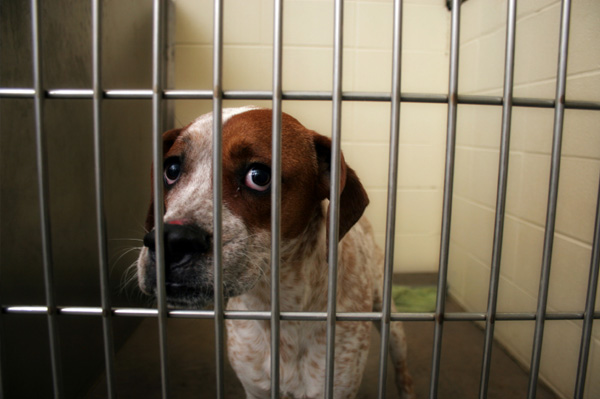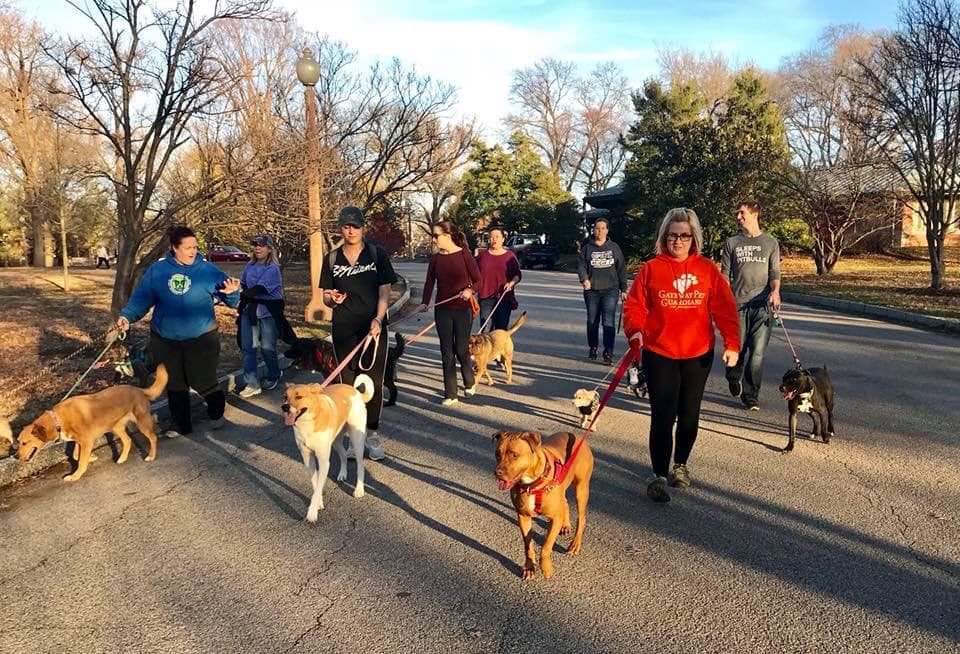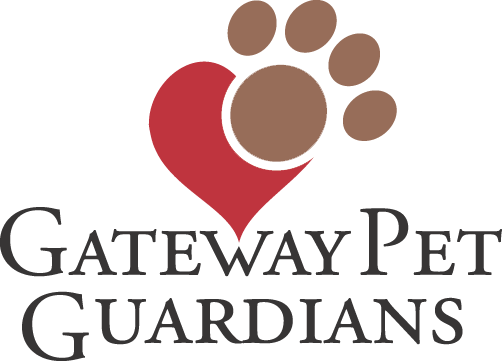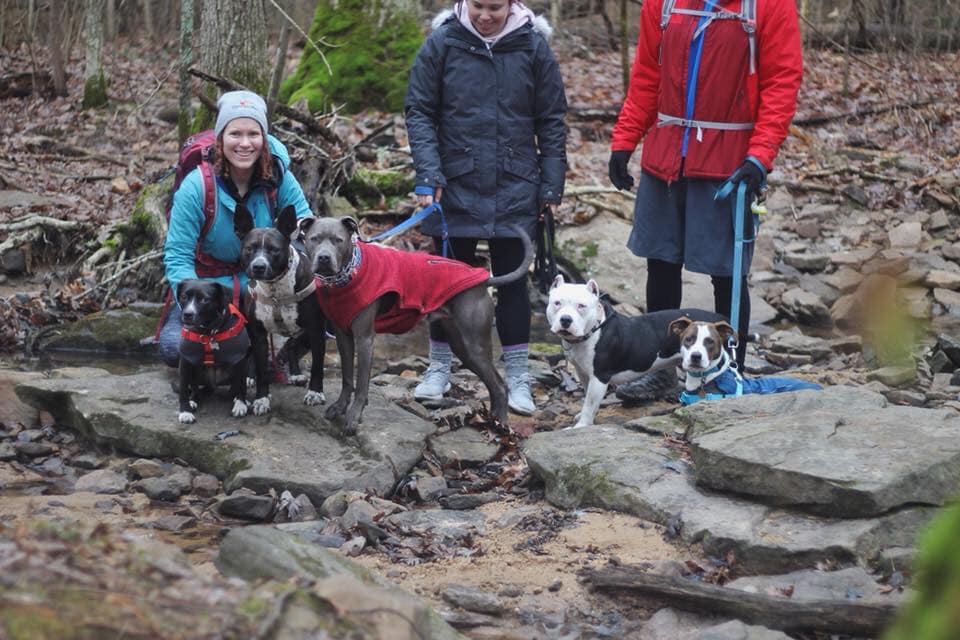It is never too late to teach an old dog new tricks! That same philosophy applies to animal welfare professionals. My name is Jill Henke and I have been involved in animal welfare for 12 years and currently work as the Program Director for Gateway Pet Guardians (GPG). Prior to GPG, I had always worked with 100% foster-based organizations and didn’t have a ton of experience working within a shelter environment. In my first year on the job, one thing became abundantly clear to me- dogs do not belong in shelters!

GPG currently runs a small 13 kennel dog shelter (and a big foster program!). We have paid staff caring for the dogs in addition to an incredible group of volunteers that provides so much socialization and enrichment to our shelter dogs. Our volunteers walk the dogs multiple times per day, we host doggie playgroups to help them burn off energy, we have a hiking program, we have training classes, we use enrichment/puzzle feeders, the dogs get Kongs every day, we play music, we diffuse calming essential oils and more. And despite all of this- many dogs suffer from shelter stress and as a result their behavior declines. They start to get reactive in the kennel and bark and lunge as anyone approaches, they start getting nippy when being leashed and the longer they stay in the shelter, the worse these behaviors can become. Volunteers are apprehensive to handle the dogs meaning they start to get less and less exercise and enrichment and adopters are turned off by their crazy behavior in the kennel. So the dogs sit longer and longer and as staff we start to feel helpless, we feel like we are failing them.

In January 2019, I was selected to attend the Maddie’s Systematic Canine Lifesaving Class at Austin Pets Alive! (APA!). The best word to describe the experience is LIFE CHANGING! The culture and energy at APA! Is contagious. The APA! INTENTIONALLY takes the majority of dogs with behavior issues from their local municipal shelter. They WANT to work with these dogs and they have a system in place that is incredibly successful at rehabilitating these dogs so they can be adopted to families who adore them. I left so inspired and with so many new ideas that we could put into place immediately and couldn’t wait to get back to share with my teams.
In just two months, we have met and discussed and prioritized our plans and have already implemented some tools and programs that I know are going to have a huge impact for GPG!
Here are some examples:
Long Stay Risk Assessment: This assessment allows to identify dogs as they are entering our system that are most are most likely to stay the longest with our organization. We consider breed and age. Small dogs and puppies fly off the adoption shelf, but large blocky headed wiggle butts stick around longer. We also look at their health and how social they are with other dogs and people. Using a standardized scoring scale, we identify which dogs might stay the longest with us and prioritize our resources towards them from the beginning to help shorten their length of stay. This assessment allows us to prioritize which dogs need professional photos or should be promoted on our social media as well as helping us prioritize who needs to be paired up with a Shelter Guardian (a volunteer dedicated to taking them on extra outings) or needs to head out on a Slumber Pawty (short term foster program so we get a better feel for how the dog is in a home environment) or needs to start one of our training classes.
Establishing a Kennel Routine: At APA!, I learned their kennel routine is really the foundation for all of their behavior modification and training. Behavior modification always seems so unattainable without having a large budget for professional trainers, but I learned that every single person handling dogs at our shelter can be helping with behavior modification and it starts with a strong kennel routine. Check out the video demonstrating our new Kennel Routine!
Implementing the Use of Drag Leashes: This is one of those “why didn’t I think of that” things! Many dogs in our shelters come initially as the “frat boy” types. They are jumpy and mouthy and excited and anxious all at the same time. Volunteers tend to shy away from walking those dogs because they are a lot to handle, but they are also the ones that need the exercise the most. The drag leash concept simply means your jumpy and mouthy dogs drag a thin braided leash at all times, even when going for a walk, they are dragging a short leash. That way anytime they start getting jumpy and mouthy, a volunteer or staff member can quickly step on the leash and stop them from doing the naughty behavior. This helps train them out of that undesirable behavior.
Expanding Playgroups: Dogs Playing for LIfe changed our world 3 years ago by introducing us to the concept of playgroups for ALL dogs. There are very few dogs that can’t be in a playgroup and the benefits of playgroups are immeasurable. At APA!, my takeaway is that if we did nothing else, we should be doing more playgroups. We have put together playgroup tool belts that include a spray bottle, can of pennies, Pet Corrector and an airhorn, so our staff feel more confident having to the tools to interrupt any spats that happen. We are also planning on training volunteers to run playgroups for us so we can increase the number and size of playgroups.
Starting a Canine Good Citizen/Top Dog Training Program: At GPG, we have always offered training classes, but at the APA!, we learned how they implemented a Canine Good Citizen training class that boosted their adoptions of their big, blocky headed wiggle butts. So we are transforming our Sunday training class into a Canine Good Citizen training class, so the dogs going through the program would be eligible to be certified as a Canine Good Citizen when they are adopted. These dogs will know not only how to sit and lay down and stay in place, but also but also how to walk on a loose leash and greet strangers. Who doesn’t want a well trained pooch?!
As we look to the near future and our move to a much large (54,000 SF!) facility, we know we will increase our capacity to house dogs (and cats!) dramatically and having these tools in place will allow us to hit the ground running!

Having worked with many animal welfare organizations over the years, one thing that makes Gateway Pet Guardians so unique is our commitment to professional development for our staff. Animal welfare is a profession and by attending conferences and learning opportunities like the Maddie’s Fund Apprenticeships, we are able to learn from the best of the best in the industry and put life saving programs and tools into place quickly which allows us to maximize our lifesaving impact in our local communities. In short, you absolutely can teach an old dog new tricks! A giant #ThankstoMaddie for funding these professional development opportunities!

